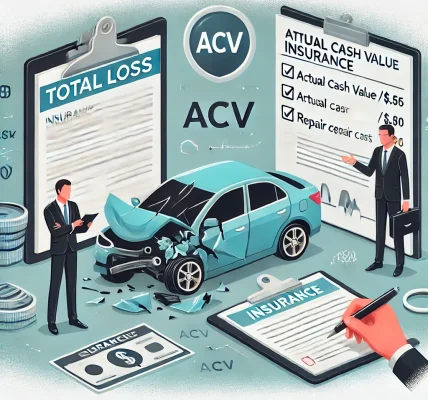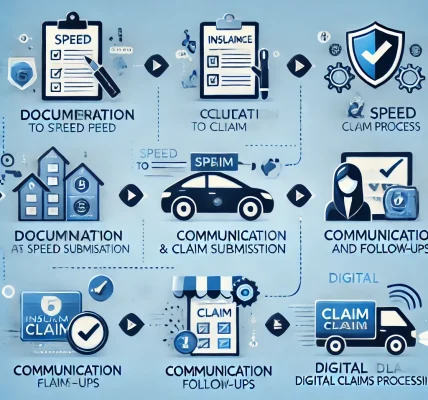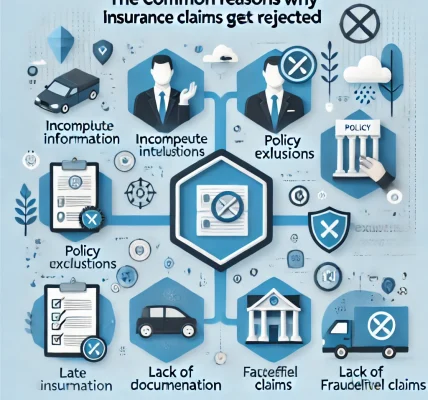When you file an insurance claim, one of the most important individuals in the process is the insurance adjuster. Their role is to assess the damages, verify the legitimacy of the claim, and determine the compensation you are entitled to receive. However, many policyholders are unaware of how insurance adjusters work, which can sometimes lead to confusion or disputes. This comprehensive guide will help you understand the role of an insurance adjuster, how they evaluate claims, and how you can effectively navigate the process to ensure a fair settlement.
What is an Insurance Adjuster?
An insurance adjuster, also known as a claims adjuster, is a professional appointed by an insurance company to evaluate claims and determine the payout based on the terms of the policy. Their primary responsibilities include:
- Investigating the details of the claim
- Inspecting damages and assessing repair or replacement costs
- Reviewing documentation and policy coverage
- Negotiating settlements with the claimant
- Preventing fraudulent claims
Understanding their role can help you effectively communicate and ensure your claim is handled fairly.
Types of Insurance Adjusters
There are three main types of insurance adjusters, and it’s essential to know which one you are dealing with:
1. Company Adjusters
These adjusters work directly for the insurance company and aim to protect the company’s financial interests while assessing claims.
2. Independent Adjusters
Independent adjusters are hired by insurance companies but work as third-party contractors. They function similarly to company adjusters but are not permanent employees of the insurer.
3. Public Adjusters
Public adjusters work for the policyholder, not the insurance company. They help claimants maximize their settlement by providing independent assessments and negotiating on their behalf. If you feel the insurance company’s offer is too low, hiring a public adjuster may be beneficial.
Step-by-Step Guide to Dealing with an Insurance Adjuster
Step 1: Understand Your Policy
Before dealing with an insurance adjuster, review your policy carefully. Know your coverage limits, exclusions, and deductibles to ensure the adjuster’s evaluation aligns with your policy terms.
Pro Tip: Request a copy of your policy from your insurer if you do not have one readily available.
Step 2: Document Everything
Proper documentation is crucial in supporting your claim. Make sure to:
- Take clear photos and videos of the damages.
- Keep all repair invoices, receipts, and medical bills.
- Note the date, time, and details of the incident.
- Maintain records of all communications with the insurance company.
Pro Tip: Organize your documents in a dedicated folder to avoid losing important information.
Step 3: Prepare for the Adjuster’s Visit
When an adjuster visits your property, be ready to provide all necessary information. Walk them through the damages and present your documentation.
Pro Tip: Do not downplay or exaggerate damages. Present facts honestly to maintain credibility.
Step 4: Be Mindful of Statements Given to the Adjuster
Insurance adjusters may ask questions to determine liability. Be cautious with your words, as statements can be used to minimize or deny your claim.
Pro Tip: If unsure about any response, ask for time to review your policy before answering.
Step 5: Get Repair Estimates
Obtain multiple repair estimates from independent contractors before accepting the adjuster’s assessment. This ensures you receive fair compensation for repairs or replacements.
Pro Tip: If the adjuster’s estimate is significantly lower than independent quotes, negotiate with supporting evidence.
Step 6: Review the Adjuster’s Report
After the adjuster completes their assessment, they will provide a report with their findings and the estimated settlement amount. Review it carefully to ensure accuracy.
Pro Tip: If discrepancies are found, request clarification and provide additional evidence if necessary.
Step 7: Negotiate If Needed
If you believe the adjuster’s offer is too low, negotiate. Provide independent assessments, contractor estimates, and documented evidence to justify a higher settlement.
Pro Tip: Remain professional and composed during negotiations to foster a cooperative relationship.
Step 8: Know When to Escalate
If negotiations do not lead to a fair settlement, consider:
- Requesting a reassessment by another adjuster.
- Consulting a public adjuster.
- Filing a complaint with your state’s insurance department.
- Seeking legal assistance if necessary.
Pro Tip: Keep a record of all correspondence related to your claim for reference if escalation is needed.
Common Tactics Used by Insurance Adjusters (and How to Respond)
Insurance adjusters work in the best interest of the insurance company, and sometimes, they may use tactics to minimize payouts. Here are some common strategies and how to handle them:
1. Quick, Low Settlement Offers
- Tactic: Offering a fast settlement before you fully assess damages.
- Response: Politely decline and request time to evaluate your losses properly.
2. Asking for a Recorded Statement
- Tactic: Using recorded statements to find inconsistencies that may reduce your payout.
- Response: Politely refuse unless required by your policy and consult a professional before providing one.
3. Delaying the Process
- Tactic: Prolonging claim processing to pressure you into accepting a lower settlement.
- Response: Follow up regularly and document all communications.
4. Denying Certain Losses Are Covered
- Tactic: Claiming damages fall under policy exclusions.
- Response: Review your policy and seek clarification from an independent adjuster or legal expert.
Final Thoughts
Understanding the role of an insurance adjuster and preparing yourself with the right knowledge can significantly impact the outcome of your claim. By documenting your losses, negotiating effectively, and being aware of common tactics, you can ensure you receive a fair settlement.



